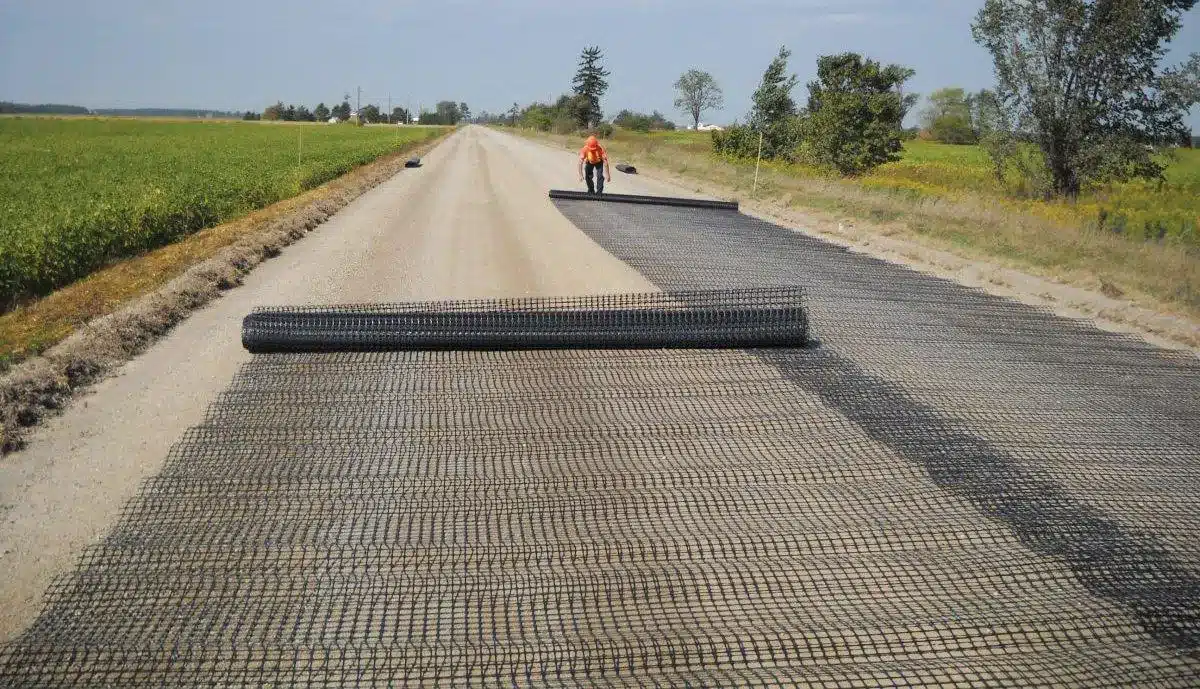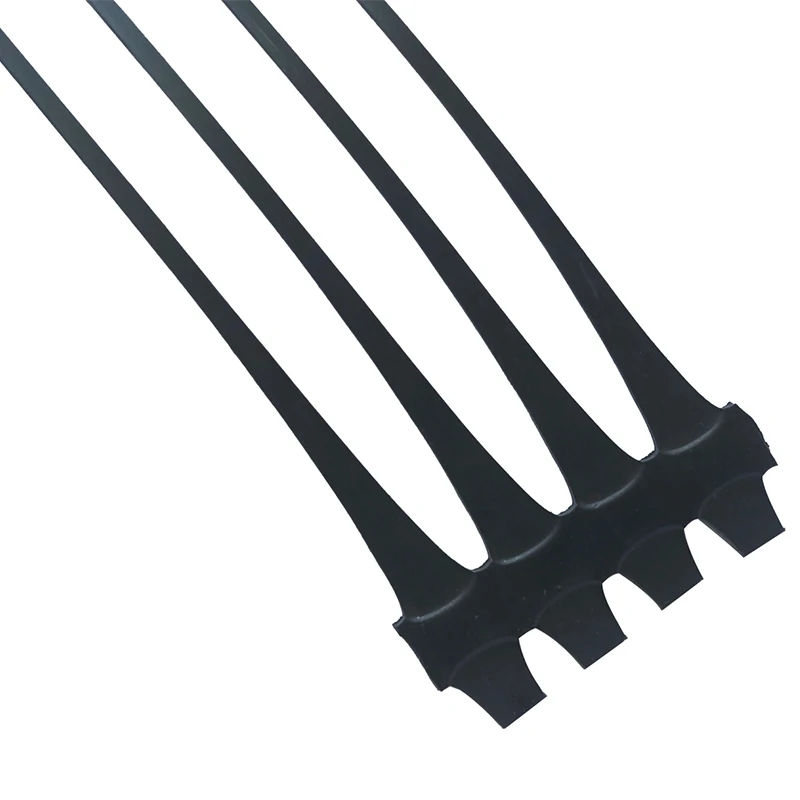+86-159 9860 6917
info@geofantex.com
geofantex@gmail.com
+86-400-8266163-44899
Geogrid grass pavers are an eco-friendly and durable solution for creating permeable surfaces that combine aesthetics and functionality. These systems allow for stable, grass-covered pavements that can support vehicular traffic while promoting drainage and reducing soil erosion. In this article, we will explore the installation process of geogrid grass pavers, covering everything from preparing the ground to laying the pavers with grass.
How do you install grass grid pavers?
Installing grass grid pavers is a straightforward process. Here’s a step-by-step guide to help you:
Materials Needed:
- Grass grid pavers
- Gravel or crushed stone
- Sand (optional)
- Landscape fabric (optional)
- Grass seed or sod
- Rake and shovel
- Level
- Rubber mallet
Steps:
- Prepare the Area: Mark the area where you want to install the grass grid pavers. Use a shovel to clear any grass, weeds, or debris. Excavate the area to a depth of around 3-4 inches, depending on the thickness of the grid pavers and the drainage requirements.
- Install Landscape Fabric (Optional): If you want to prevent weed growth, lay down a layer of landscape fabric. This will allow water to drain while blocking weeds.
- Create a Gravel Base: Add a 2-3 inch layer of gravel or crushed stone to the excavated area. This helps with drainage and provides a stable base for the pavers. Spread the gravel evenly and compact it using a tamper or plate compactor to create a firm base.
- Add a Layer of Sand (Optional) : If you prefer, you can add a thin layer (1 inch) of sand over the gravel base. This can help level the surface and provide additional drainage.
By following these steps, you’ll have a stable and attractive surface made with grass grid pavers.

How to install a geo grid walkway?
Here’s a concise paragraph with bullet points on how to install a geogrid walkway:
- Plan the path: Mark the walkway layout using spray paint, stakes, or string to define the width, length, and curves.
- Excavate the area: Dig out the marked path to a depth of 4–8 inches (10–20 cm), depending on soil condition and foot traffic.
- Prepare the subgrade: Clear away roots, rocks, and debris, then compact the soil using a tamper or plate compactor.
- Lay the geogrid: Unroll the geogrid fabric along the excavated path, overlapping edges by 6–12 inches and securing it with landscape staples.
- Add a base layer: Pour 4–6 inches of compactable gravel or crushed stone over the geogrid, then spread and compact it in layers.
- Install the surface layer: Add decomposed granite, sand, fine gravel, or pavers as the top layer, depending on your desired finish.
- Edge the walkway (optional): Use plastic, metal, or stone edging to contain the materials and enhance durability.
- Final compaction and cleanup: Compact the entire surface one last time and clean up any loose material for a smooth finish.
This method helps stabilize the walkway, making it durable and low-maintenance, especially on soft or sloped ground.
How is geogrid installed?
Geogrid Installation Guide
| Site Preparation | Geogrid installation begins with proper site preparation. Start by clearing and leveling the area where the geogrid will be installed. This step ensures a smooth, even surface for the subsequent layers, reducing any potential for uneven installation. |
| Lay the Base Layer | After preparing the base, roll out the geogrid material over it and allow it to follow the natural contours of the ground. This ensures that the geogrid adapts to the terrain without creating gaps or uneven sections. Ensure the geogrid is positioned flat and without folds to maintain its structural integrity. |
| Roll Out the Geogrid | After preparing the base, roll out the geogrid material over it and allow it to follow the natural contours of the ground. This ensures that the geogrid adapts to the terrain without creating gaps or uneven sections. Ensure the geogrid is positioned flat and without folds to maintain its structural integrity. |
| Secure the Geogri | Secure the geogrid using stakes or anchoring pins, making sure to overlap sections by at least a foot if multiple pieces are used. Proper securing ensures the geogrid stays in place during and after installation. |
| Add the Infill | With the geogrid securely in place, you can proceed to add the desired infill. Whether you’re using soil for grass or aggregate for a driveway, the infill material should be evenly distributed to provide stability and complete the installation. |
How to lay pavers with grass?
Installing geogrid correctly is essential to ensure a stable, long-lasting surface, whether for grass pavers, walkways, or driveways. Here’s a clear step-by-step guide:
1. Prepare the Site:
- Clear the area of debris, roots, rocks, or old pavement.
- Level and compact the soil to create a smooth, even surface for the geogrid installation.
2. Lay the Base Layer:
- Spread a layer of gravel or crushed stone (typically 2–6 inches depending on load requirements) to support the geogrid and improve drainage.
- Compact the base thoroughly to prevent settling over time.
3. Roll Out the Geogrid:
- Unroll the geogrid over the prepared base, allowing it to follow the natural contours of the ground.
- Overlap sections by at least 12 inches (30 cm) if using multiple pieces.
- Ensure the geogrid lies flat and free of folds to maintain structural integrity.
4. Secure the Geogrid:
- Use stakes or anchoring pins to hold the geogrid in place.
- Proper securing prevents shifting during infill placement.
5. Add the Infill Material:
- For grass pavers: fill the geogrid cells with nutrient-rich soil and plant grass seed or sod.
- For gravel or aggregate surfaces: fill cells with compactable material, then level and compact.
6. Maintain the Surface:
- Water grass regularly until established.
- Perform occasional maintenance, such as trimming or replenishing infill, to keep the surface functional and attractive.
Key Tip: Proper site preparation, base compaction, and secure placement of the geogrid are critical to prevent uneven surfaces, erosion, or paver shifting over time.
By following these steps, geogrid installations provide durable, eco-friendly, and permeable surfaces that balance functionality with natural aesthetics, making them ideal for driveways, walkways, parking areas, and landscaped spaces.
Geogrid grass pavers offer a practical and environmentally friendly solution for creating stable, green pavements. By following the proper installation steps, including excavating the site, laying a stable foundation, and filling the geogrid with grass or other materials, you can achieve a durable and aesthetically pleasing surface. Whether for driveways, walkways, or parking areas, geogrid grass pavers provide a perfect balance of function and natural beauty.



Get Free Sample
We’ll respond as soon as possible(within 12 hours)





















